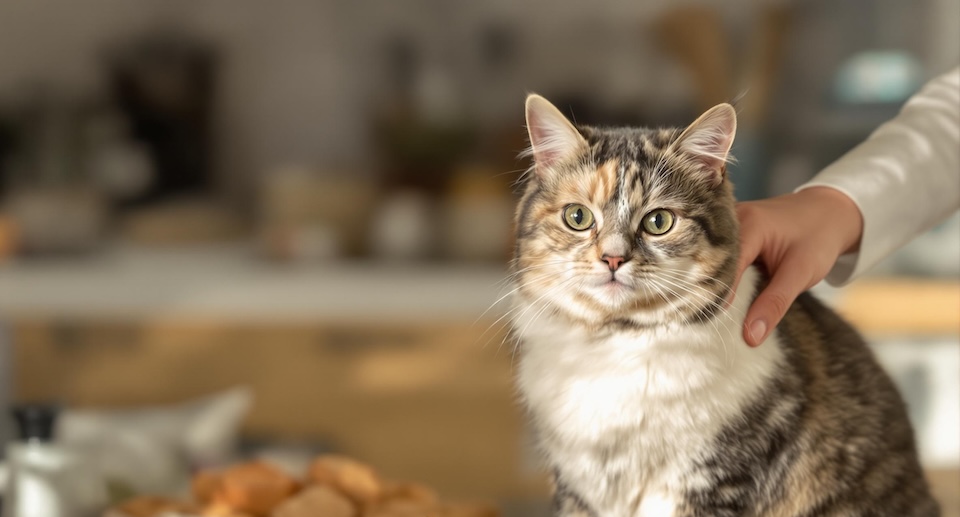Cat Peeing Blood: Causes, Risks, and Care Tips

Key Takeaways:
- Blood in your cat’s urine (hematuria) may signal inflammation, infection, or urinary tract issues—even if your cat seems fine otherwise.
- Signs like straining, vocalizing in the litter box, or going more often than usual are all clues your cat might need a vet visit.
- The sooner you get it checked out, the easier it is to treat—most cats bounce back well with the proper care and a clear plan from your vet.
Why Your Cat May Be Peeing Blood
Hematuria is the medical term for blood in the urine, and in cats, it’s usually a sign of inflammation, infection, or irritation somewhere in the urinary tract. Some cats will show pain or urinate more frequently, while others might show no other symptoms at all.
Urinary tract infections (UTIs) are a leading cause, but they don’t happen in a vacuum. Cats may be prone to infections due to stress, abnormal urinary anatomy, low immune function, or health issues like kidney trouble or diabetes. Stones in the bladder or urethra can also create irritation, which then leads to infection.
Learn more about cat urinary health and prescription diets to help manage or prevent issues like these.
Warning Signs to Look Out For
Cats can be subtle when they’re in pain, so it’s helpful to know what behaviors or physical signs might mean something’s wrong. Blood in the urine often appears alongside other symptoms that signal discomfort or distress.
Look out for these common signs of trouble:
- Struggling to urinate or spending extra time in the litter box
- Yowling, vocalizing, or appearing restless during bathroom trips
- Urinating in unusual places like laundry, bathtubs, or rugs
- Frequently attempting to urinate with little or no output
- Showing signs of discomfort, such as restlessness or crouching
- Decreased appetite, reduced grooming, or sudden isolation
Even mild symptoms can be a sign of a more serious problem brewing under the surface. Keep a close eye on your cat, and call your vet if anything seems off.
When It’s Time to Call the Vet
Blood in the litter box is a clear reason to schedule a veterinary appointment. Even if your cat is still eating, playing, or acting normal, visible blood can signal early signs of infection, inflammation, or a developing blockage. It’s better to have it evaluated sooner than to wait and risk the problem getting worse.
If your cat strains, cries out, or repeatedly goes to the litter box without producing much urine, treat it as an emergency. These symptoms may point to a full urinary blockage, especially in male cats, which can become life-threatening within hours if left untreated.

What to Expect During Diagnosis and Treatment
Once you’ve taken your cat to the vet, they will likely take several steps to figure out what’s going on and how best to treat your pet’s condition. Prompt attention helps avoid serious complications like obstructions.
Your vet may take the following approach:
- Urinalysis and urine culture to look for infection, crystals, or abnormal cells
- Bloodwork to assess overall health and rule out liver disease or clotting issues
- Diagnostic imaging (X-rays or ultrasound) to detect stones, tumors, or inflammation
- Monitoring for obstruction in male cats, who are more prone to dangerous urinary blockages
- Advanced testing to detect hidden conditions like tumors, polyps, or clotting disorders
A thorough diagnosis helps your vet tailor treatment to your cat’s specific needs, whether it’s a short-term fix or long-term management.
Treatment Options for Cats
Once a diagnosis is made, your vet will tailor a treatment plan based on what’s causing the bleeding. Here are some of the most common treatment strategies used for cats:
- Antibiotics for urinary tract infections, usually prescribed for at least 2–3 weeks
- Prescription diets that dissolve stones or reduce the risk of future crystal formation
- Surgery or medical management if stones can’t be dissolved through diet alone
- Nutritional supplements like cranberry products or vitamin C as supportive care
- Multi-step treatment plans for feline lower urinary tract disease (FLUTD), which may include diet changes, medications, and stress reduction
- Addressing underlying health issues like liver disease or metabolic conditions
Support your cat’s recovery with prescription urinary care food and supplements designed for bladder and kidney health.
Care Tips for Recovery at Home
Helping your cat recover after urinary treatment doesn’t end when you leave the vet’s office. The steps you take at home can make a big difference in how quickly your cat feels better—and in whether the issue returns.
Here are some ways to keep your cat comfortable and on track during recovery:
- Keep their environment calm and quiet: Rest is essential for healing, so make sure your cat has a comfy bed and a peaceful area to relax.
- Encourage regular hydration: Water helps flush the urinary tract and prevent crystals. Try a cat water fountain to make drinking more appealing.
- Stick to the prescribed diet: Special urinary care diets are often key to treatment. Avoid switching foods or offering treats that might interfere.
- Clean the litter box more frequently: A clean litter box encourages use and reduces irritation. Scoop daily and change the litter as needed.
- Minimize sources of stress: Keep your cat’s routine consistent and use calming aids if needed.
- Follow medication instructions carefully: Give medications exactly as prescribed.
- Watch for returning symptoms: Monitor your cat’s habits and behavior, and contact your vet if blood or straining returns.
Frequently Asked Questions (FAQs)
Is blood in cat urine always an emergency?
Not always, but it should be treated as urgent. Even if your cat seems okay, blood in the urine could signal a developing problem. If your cat is straining, vocalizing, or unable to urinate, seek emergency care immediately.
Can stress cause a cat to pee blood?
Yes, stress can trigger feline idiopathic cystitis, a common form of FLUTD where inflammation occurs without infection. It often causes blood in the urine and may come and go. Cats living indoors or experiencing recent changes in their environment are especially prone to it.
What kinds of tests help diagnose the cause of blood in a cat’s urine?
Your vet may recommend a urinalysis, bloodwork, and imaging like X-rays or an ultrasound. These tests help identify infections, stones, blockages, or other causes of bleeding.
Can diet help prevent future urinary issues in my cat?
Yes, specially formulated urinary care diets can reduce the formation of crystals, support bladder health, and improve hydration. Your vet can recommend one based on your cat’s specific needs.
What should I do if my cat can’t pee at all?
Seek emergency veterinary care immediately. A complete urinary blockage is life-threatening and needs urgent treatment, especially in male cats.
Why Early Care Matters for Cat Urinary Issues
Even if your cat seems fine on the surface, blood in the urine is a warning sign that something could be wrong beneath it. Prompt veterinary care helps rule out emergencies and sets the stage for proper treatment. From urinary tract infections to stones or more complex issues, catching the problem early makes recovery easier and less stressful for both you and your cat.
At PetHealthMD, we’re here to help you understand what signs matter and when to seek care. Our expert-backed pet wellness tips and resources are here to give you clear, practical information you can use at home.





